Military Knowledge: Harop Suicide Drone

IAI Harop is an expensive loitering munition produced by the Israel Aerospace Industries. This expensive drone is an improved version of Harpy drone and is also known as Harpy-2. The main task of this drone is to suppress the enemy’s air defense systems. Harop drone has been used operationally by the Azerbaijani army against Armenian air defense systems and vehicles in the Nagorno-Karabakh War.
A loitering munition, also known as a suicide drone or kamikaze drone is a kind of aerial weapon with a built-in munition (warhead), which can loiter (wait passively) around the target area until a target is located; it then attacks the target by crashing into it. Loitering munitions enable faster reaction times against hidden targets that emerge for short periods without placing high-value platforms near the target area and also allow more selective targeting as the attack can be changed mid-flight or aborted.
History:
The Harop suicide drone was designed and built by Israel Aerospace Industries (IAI) between 2001 and 2003. This drone was first publicly displayed in 2009 at the Indian Air Show. In the same year, the Indian Army signed a contract worth 100 million dollars to receive 10 Harop drones. The details of this contract have not been published. But the announced figure for each drone in this contract is 10 million dollars, which seems very expensive.
The multinational company MBDA showed interest in this loitering ammunition, but the contract was not concluded due to political reasons. Although the German version of the Harup was developed in collaboration with Rheinmetall Defense to meet the specific needs of the German military in 2009, this drone only progressed to the testing stage and was never put into operation by the German military.
Morocco, Azerbaijan and Singapore are other buyers of Harop suicide drones. This drone was used by Azerbaijan in the Nagorno-Karabakh war and destroyed several buses carrying Armenian forces. There are also evidences of targeting Armenian S-300 defenses in the Second Karabakh War.
Design:
The Harop UAV is actually a developed version based on the Harpy suicide drone (IAI Harpy), which made its first flight in 1989. The Harop drone is designed and built with the same features as the Harpy.
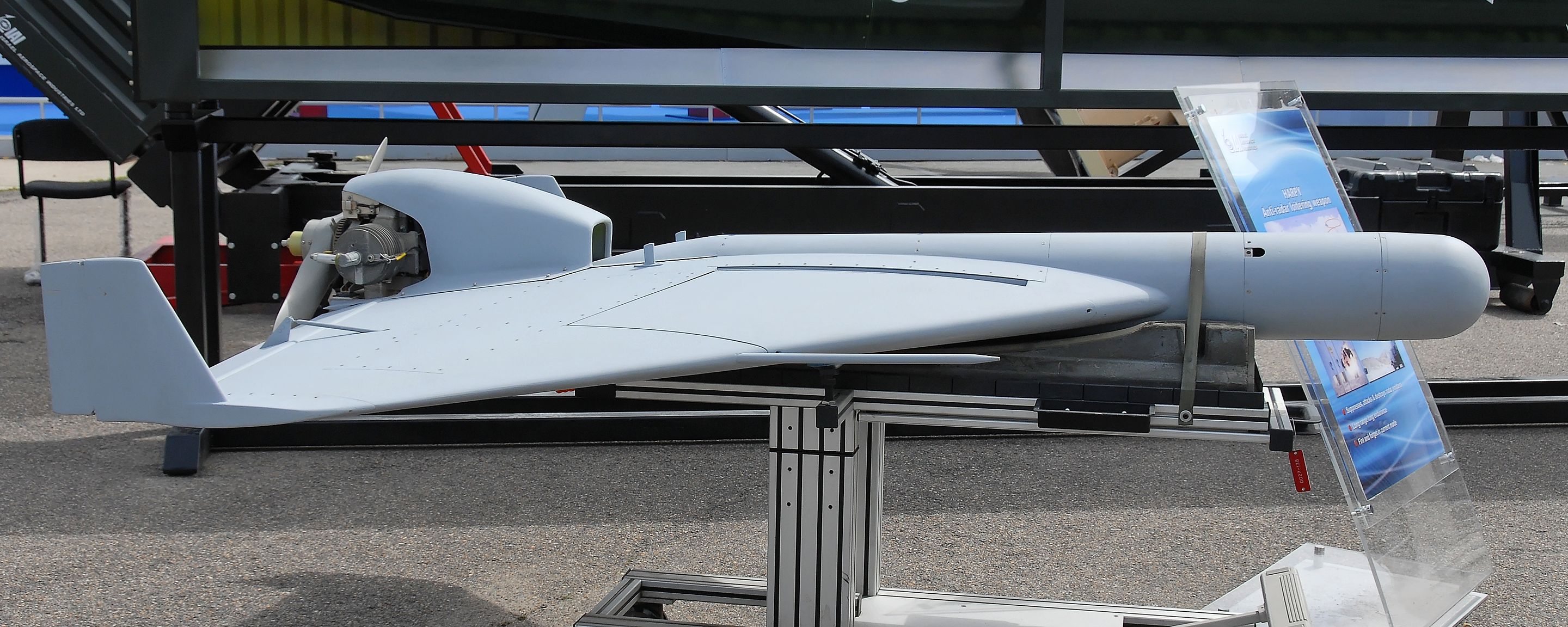
Harop uses a carbon fiber body that reduces its weight and radar cross-section. The diameter of the nose is greater than the diameter of the body. A forward-looking infrared (FLIR) camera with automatic tracking and 360 degree rotation is installed under the nose. The infrared camera is suitable for use at night and day and in all weather conditions such as fog and dust.
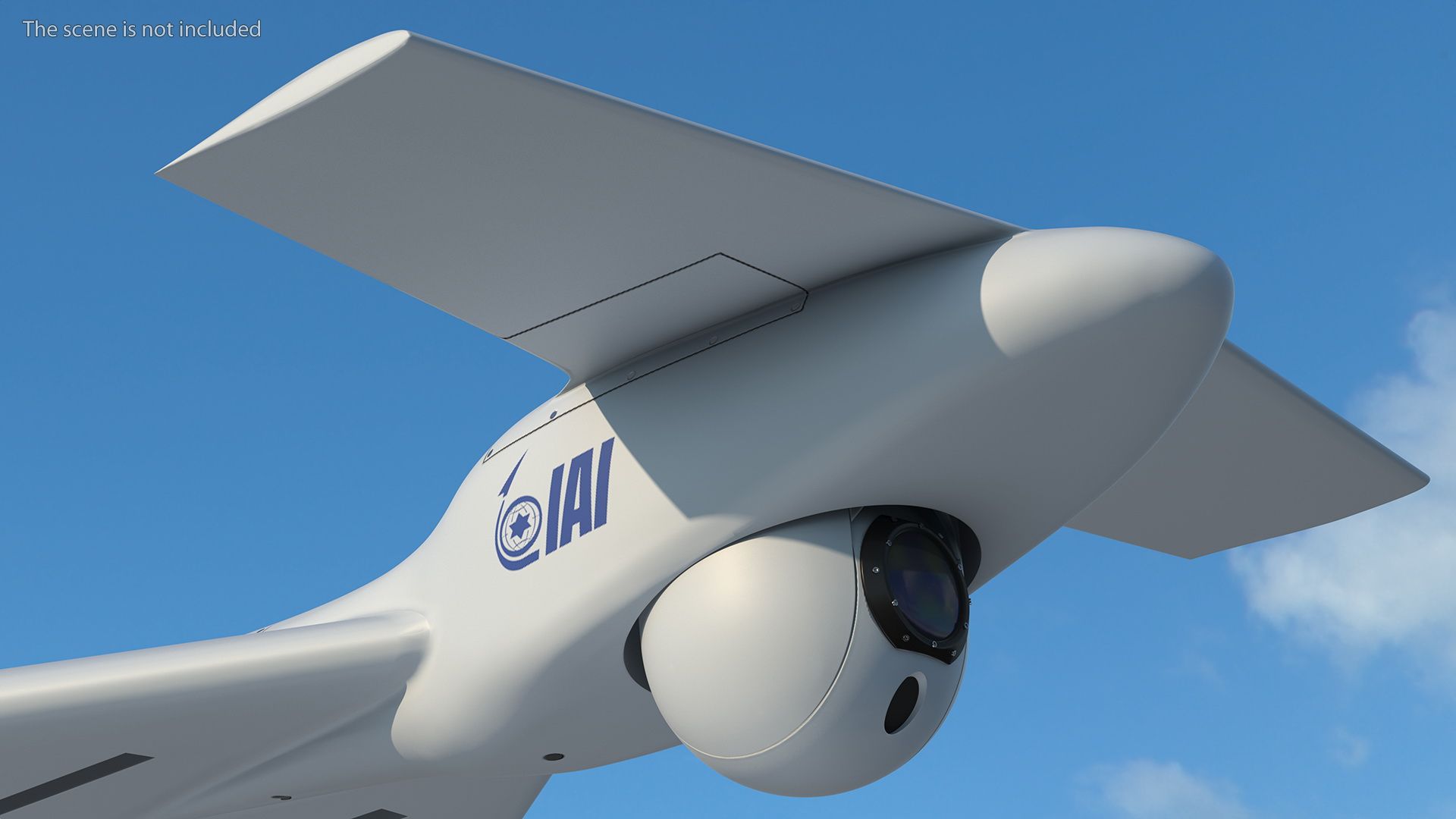
The nose has a very large empty space that allows the installation of a camera and some guidance equipment. There are two fins on the upper part of the nose. These fins provide enough lift for this heavy nose.
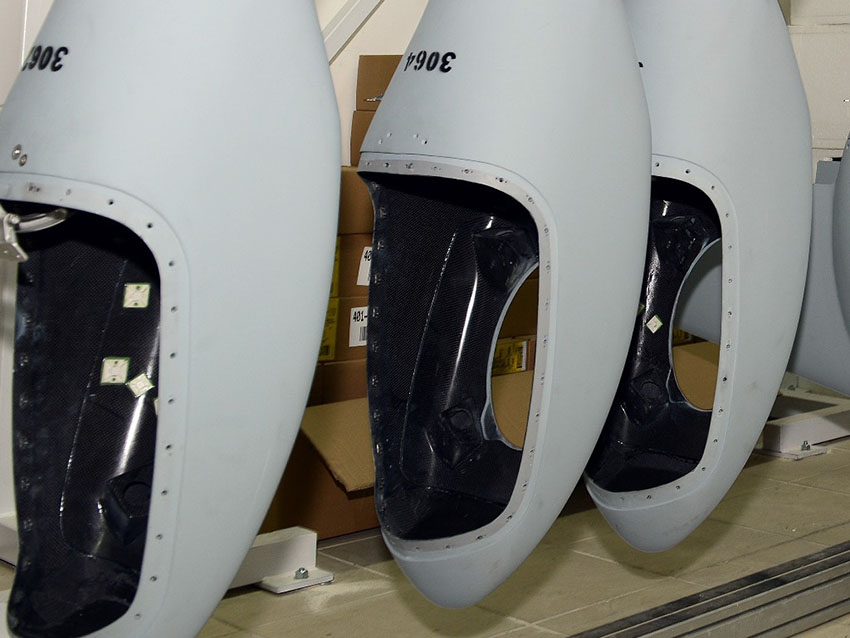
The wing is designed as a trapezoid and extends from near the nose to the end of the body and is connected to the main cylindrical body. The wings are thinner at the end of the body and are designed perpendicular to the body to create the maximum lift force. This part of the wing is made with the ability to be folded so that the drone can be placed in special rectangular launchers.
Two vertical fins with the ability to rotate are placed at the end of the body and on the wing, which provides the possibility of changing the direction of the drone during flight.

One of the Harop launcher systems is a box launcher that is placed on a commercial truck or any other truck. The wings of the Harop suicide drone fold down to fit into the box. In this way, the drone occupies the least possible space.

A solid fuel booster is used to launch the Harop in the first stage, which allows the Harop, and after reaching a sufficient height and speed, the UAV’s main engine is activated.
The Harop UAV uses a Wankel MBT ENGINE H2251 engine, which is connected to a two-bladed propeller. This engine brings Harop to a maximum speed of 400 km/h and a maximum height of 4500 meters.

Harop suicide drone has a flight duration of 6 hours and a range of 1000 km. As mentioned, this drone is launched from land and sea from box launchers. But it is also possible to configure the drone to be launched from the air by aircraft.
The Haroop UAV uses the Human-in-the-Loop (HITL) method for guidance and targeting. In this method, crews work together with machines to perform tasks, combining their abilities to make the best results in every situations. New experiences and decisions are stored in the decision cycle to increase the autonomy of the UAV in similar conditions.
The operator can select static or moving targets detected by the UAV camera. It is also possible to select static targets before the operation and flight, by entering the target information into the system.
It should be noted that a smaller type of drone called Mini-Harop or Green Dragon has also been made with a flight duration of 2 to 3 hours and a warhead of 3 to 4 kg.

The Mini-Harop UAV, which uses an electric motor, is suitable for monitoring and targeting enemy personnel and equipment with a low level of protection. Considering the high price of each version of the Harop drone, the Mini-Harop seems to be built to fill the void of a low-cost drone and reduce operational costs for destroying less important targets.
Specifications of Harop suicide drone:
Type: Suicide drone (loitering munitions)
Manufacturer: Israel Aerospace Industries
Origin: Israeli regime
Development: between 2001 and 2003
Length: 2.5 meters
Wingspan: 3 meters
Range: 1000 km
Communication range (ground station): 200 km
Radar cross section: less than 0.5 square meters
Speed: 400 km/h
Flight ceiling: 4600 meters
Flight endurance: 9 hours
Warhead weight: 23 kg
Weight: 135 kg

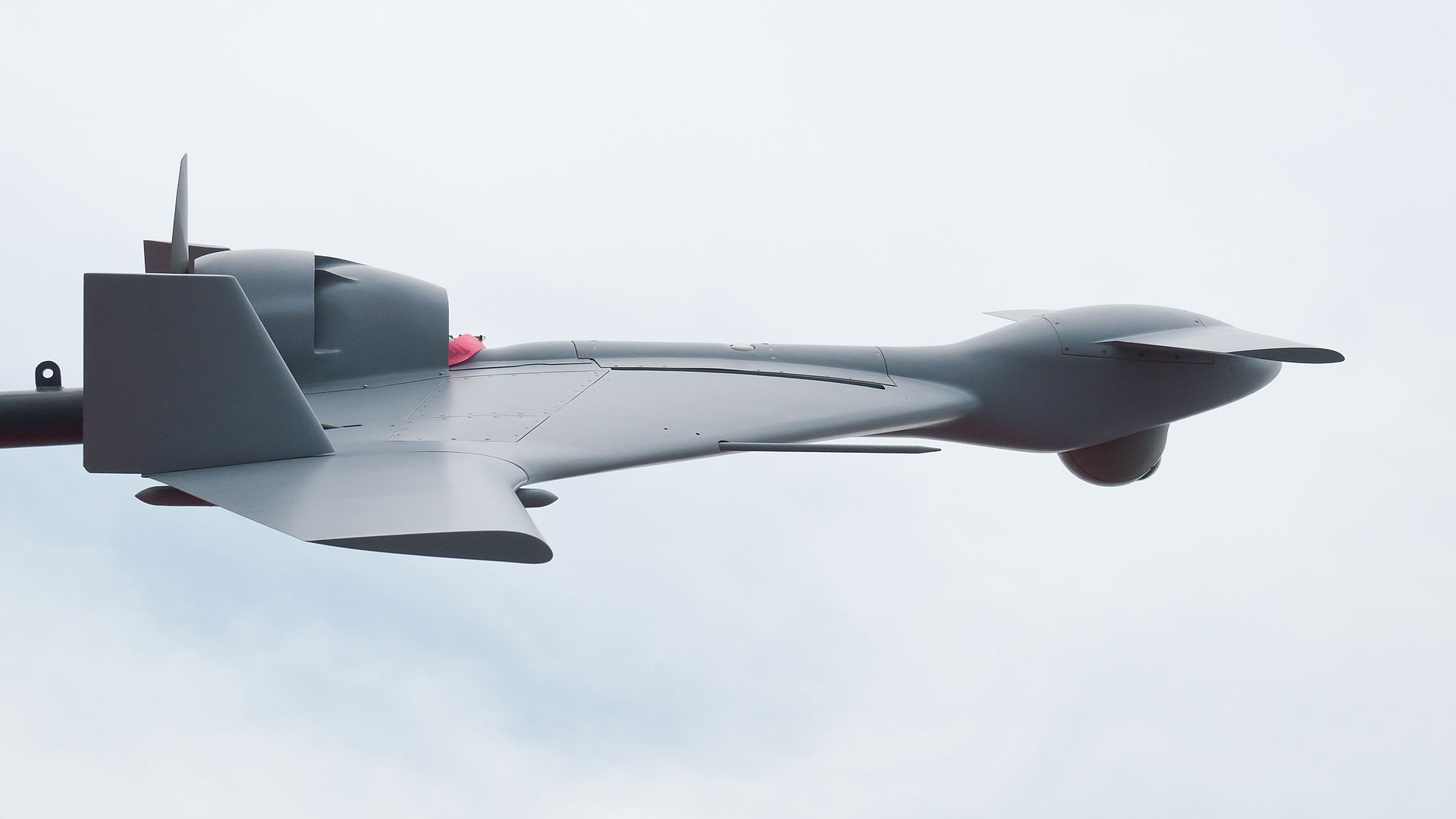


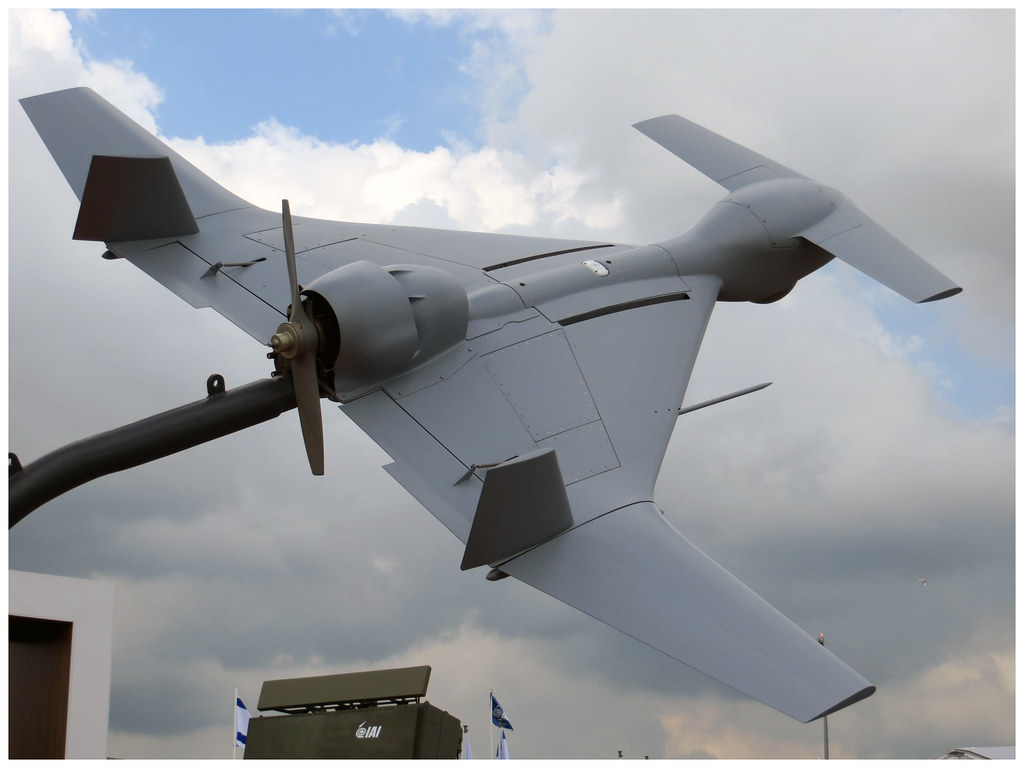
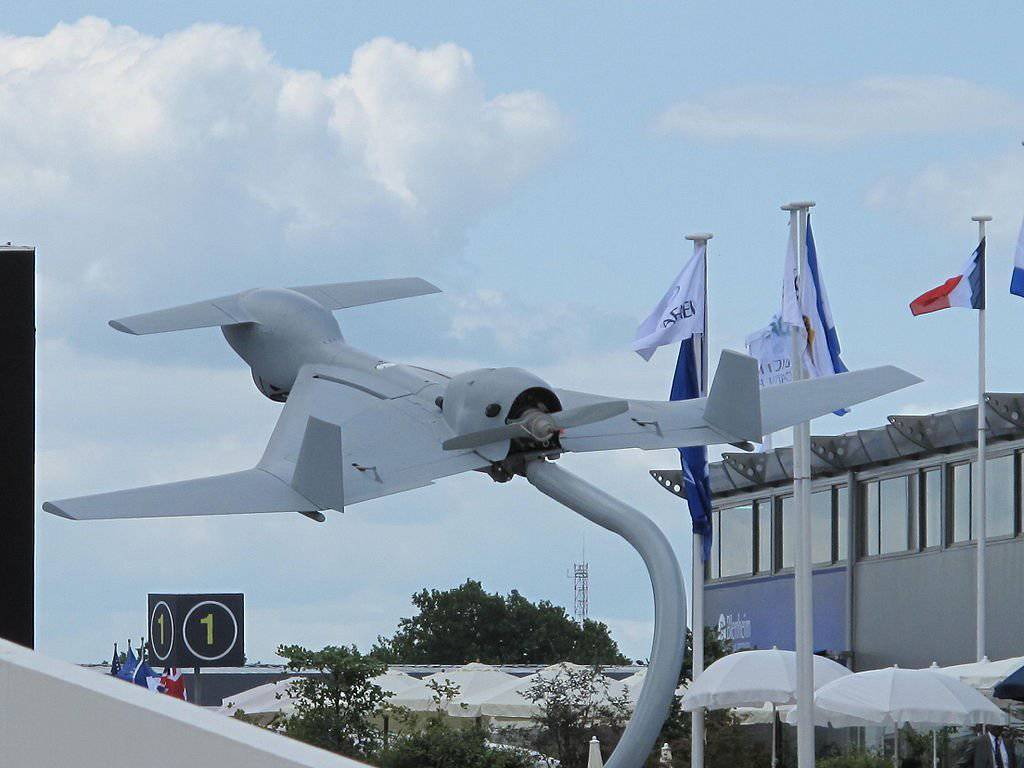
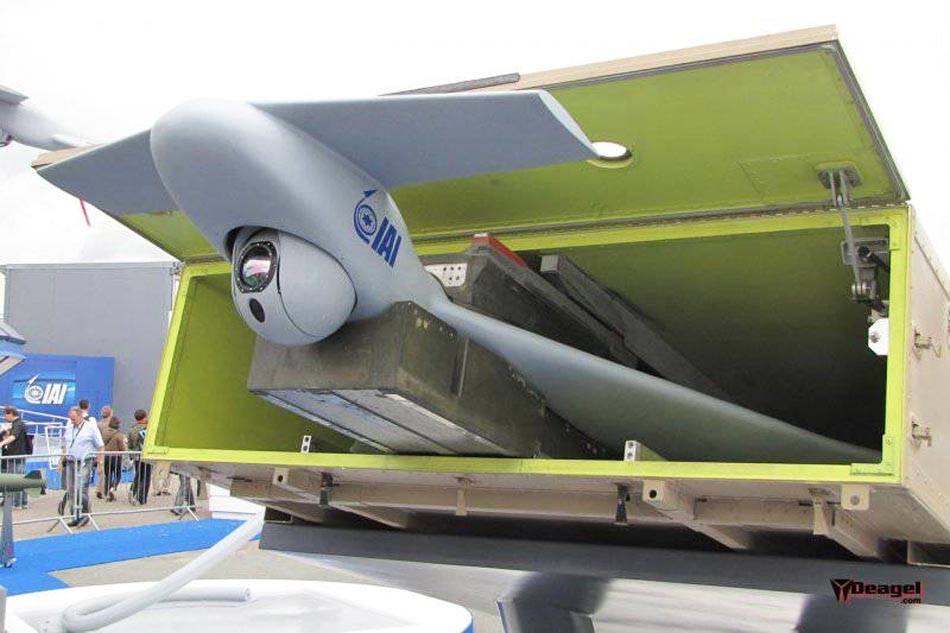
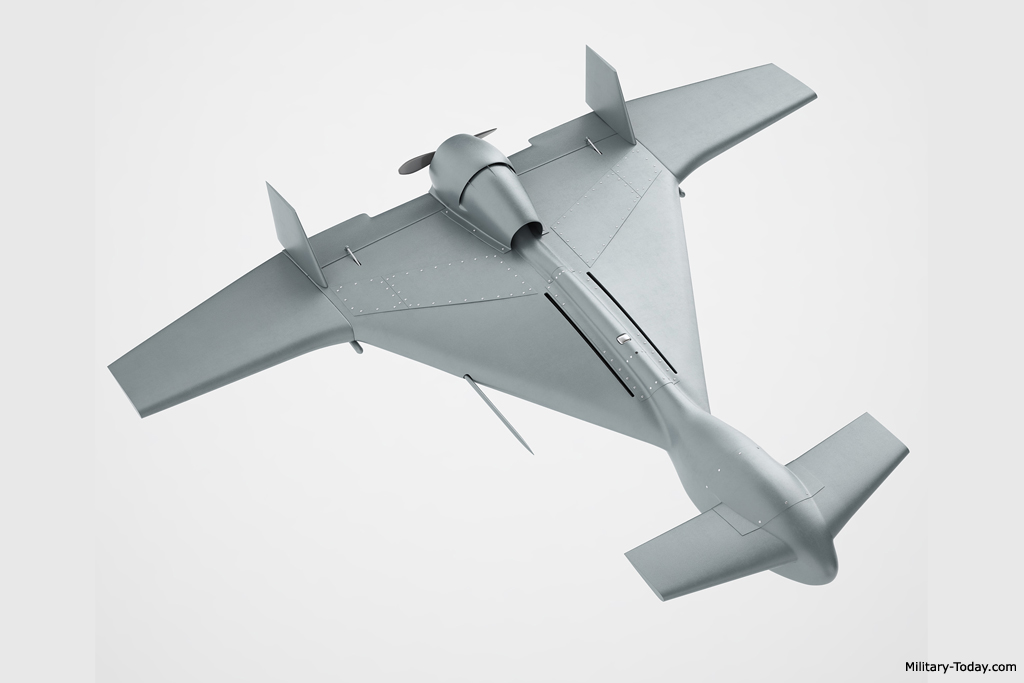
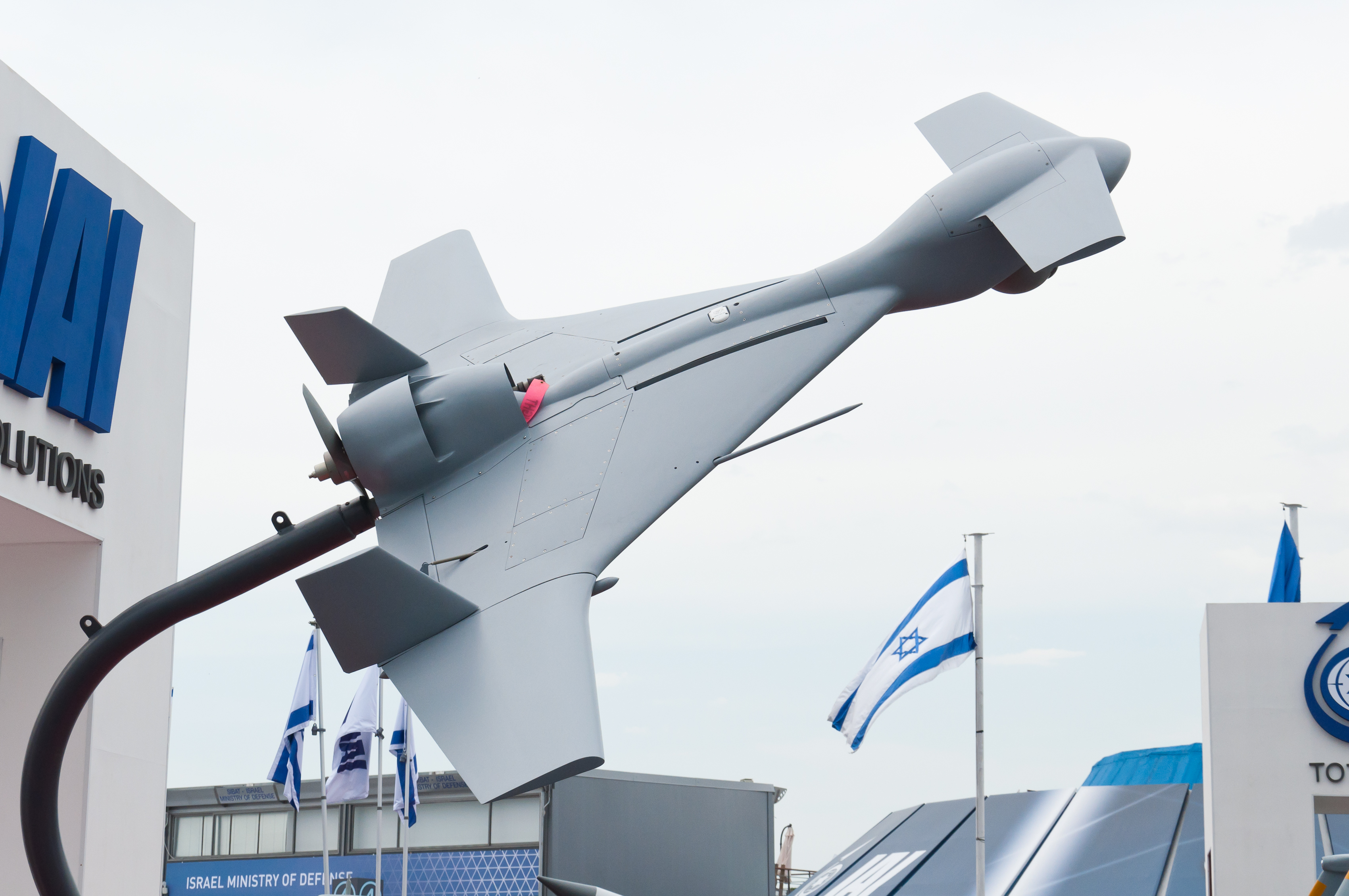
Infographics of Harop loitering munitions in Russian, Hebrew, Farsi:
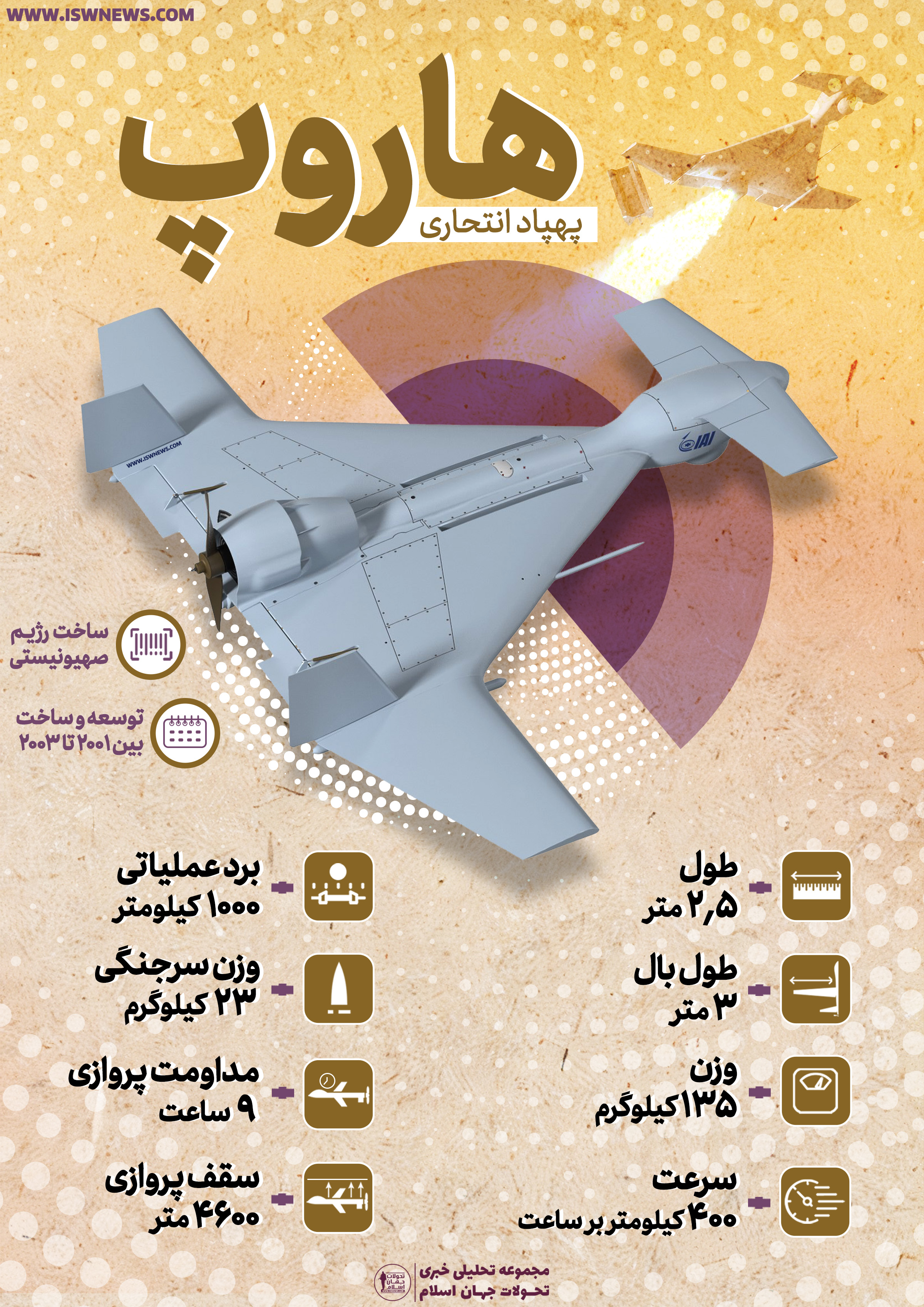

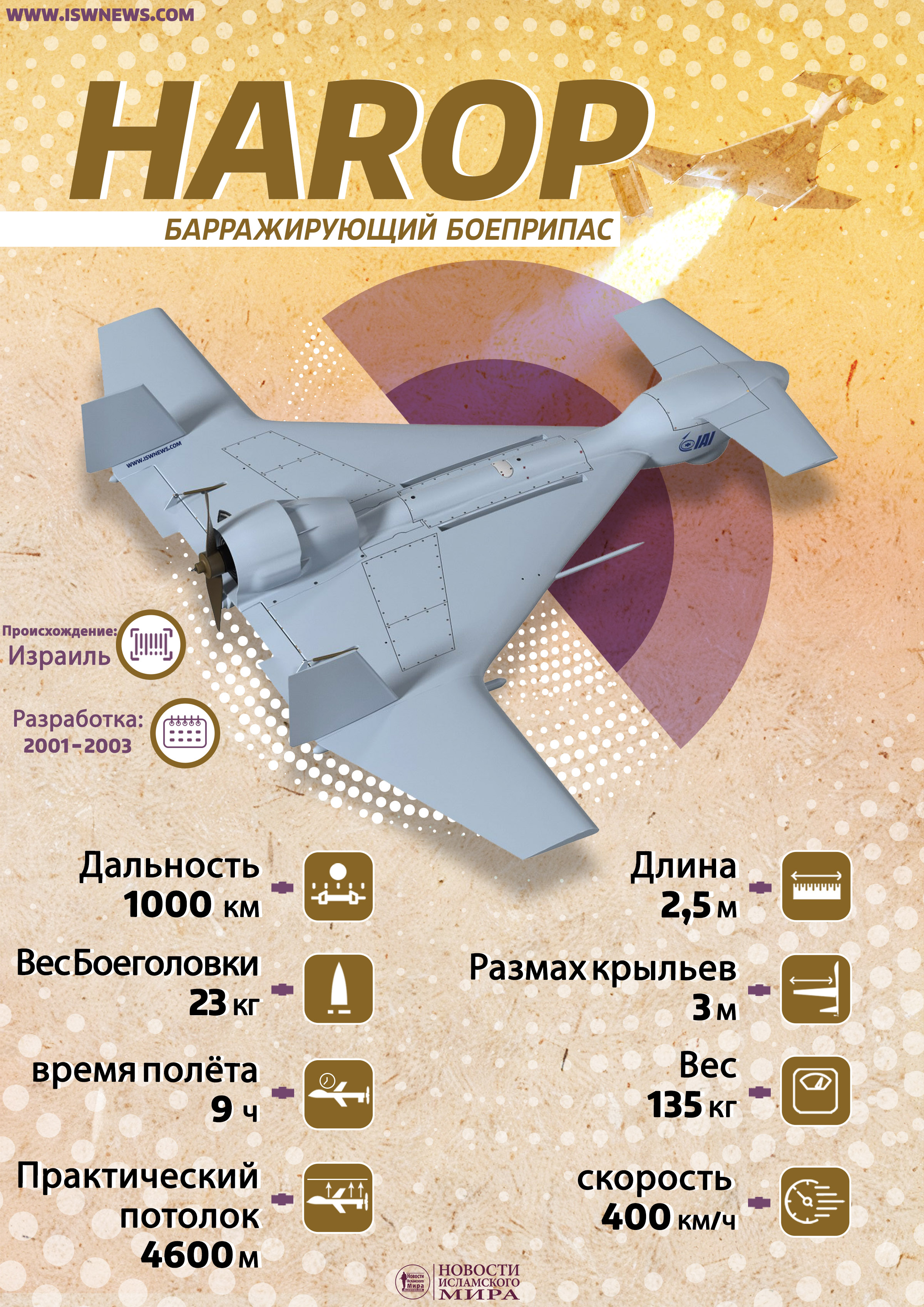
Source:
Harop Loitering Munitions UCAV System
IAI Harop Loitering munition
IAI Harop
Loitering munition




This is some clown jewish junk. Cowardly Jews leeched this from Europeans.